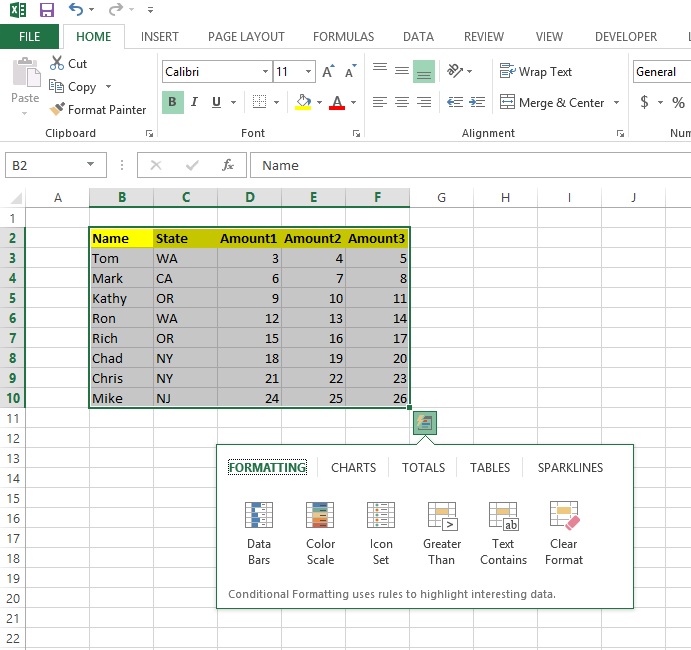

You provide the data and parameters for each analysis, and the tool uses the appropriate statistical or engineering macro functions to calculate and display the results in an output table.
#USING QUICK ANALYSIS EXCEL 2016 MAC#
Still looking for the Data Analysis ToolPak in Mac Excel? It’s finally here! Data Analysis ToolPak is an Excel add-in that helps develop complex statistical or engineering analyses. To filter the PivotTable data, simply click one or more of the buttons in the slicer. Creating a slicer is easy-just select the PivotTable you want to filter, and then on the ribbon, under the PivotTable Analyze tab, click the Insert Slicer button. It contains a set of buttons allowing you to find the items that you want to filter without the need to open drop-down lists. Slicers enable you to filter the data in a PivotTable report. To use the Formatting task pane, on the ribbon under the Format tab, click the Format Pane button or press Cmd+1 while a chart element is selected. With this single task pane, you can modify not only charts, but also shapes and text in Excel! The new Formatting task pane is the single source for formatting-all of the different styling options are consolidated in one place. One part of this fluid new experience is the Formatting task pane.
#USING QUICK ANALYSIS EXCEL 2016 FOR MAC#
To access the Formula Builder, simply click the fx button on the Formula bar or press Shift+F3.Įxcel 2016 for Mac offers a rich set of features that make creating and customizing charts simpler and more intuitive.

It allows you to search and insert a function, add data to defined function arguments, and get help on any function. With the Formula Builder in Excel 2016 for Mac, building formulas just got simpler. If you’ve ever had trouble remembering Excel functions or syntax, the new Formula Builder makes it easy. To see a collection of suggested chart types, select a cell in the range of data you want to visualize, and then on the ribbon, under the Insert tab, click Recommended Charts. This feature allows you to see how selected data would be visualized on a variety of chart types before committing to one in particular. Let Recommended Charts take some of the pain away. Recommended ChartsĬhoosing a chart type to best represent your data is often challenging.


 0 kommentar(er)
0 kommentar(er)
